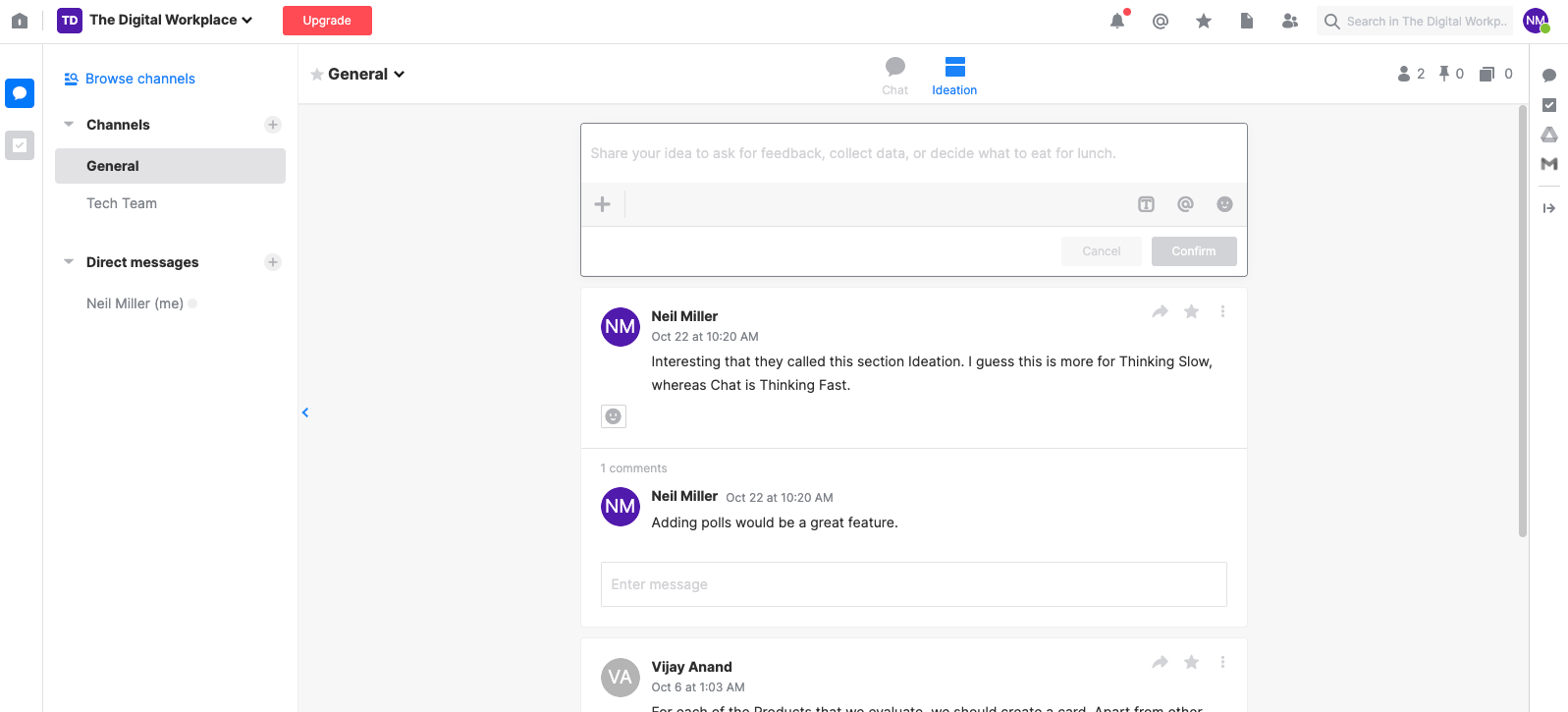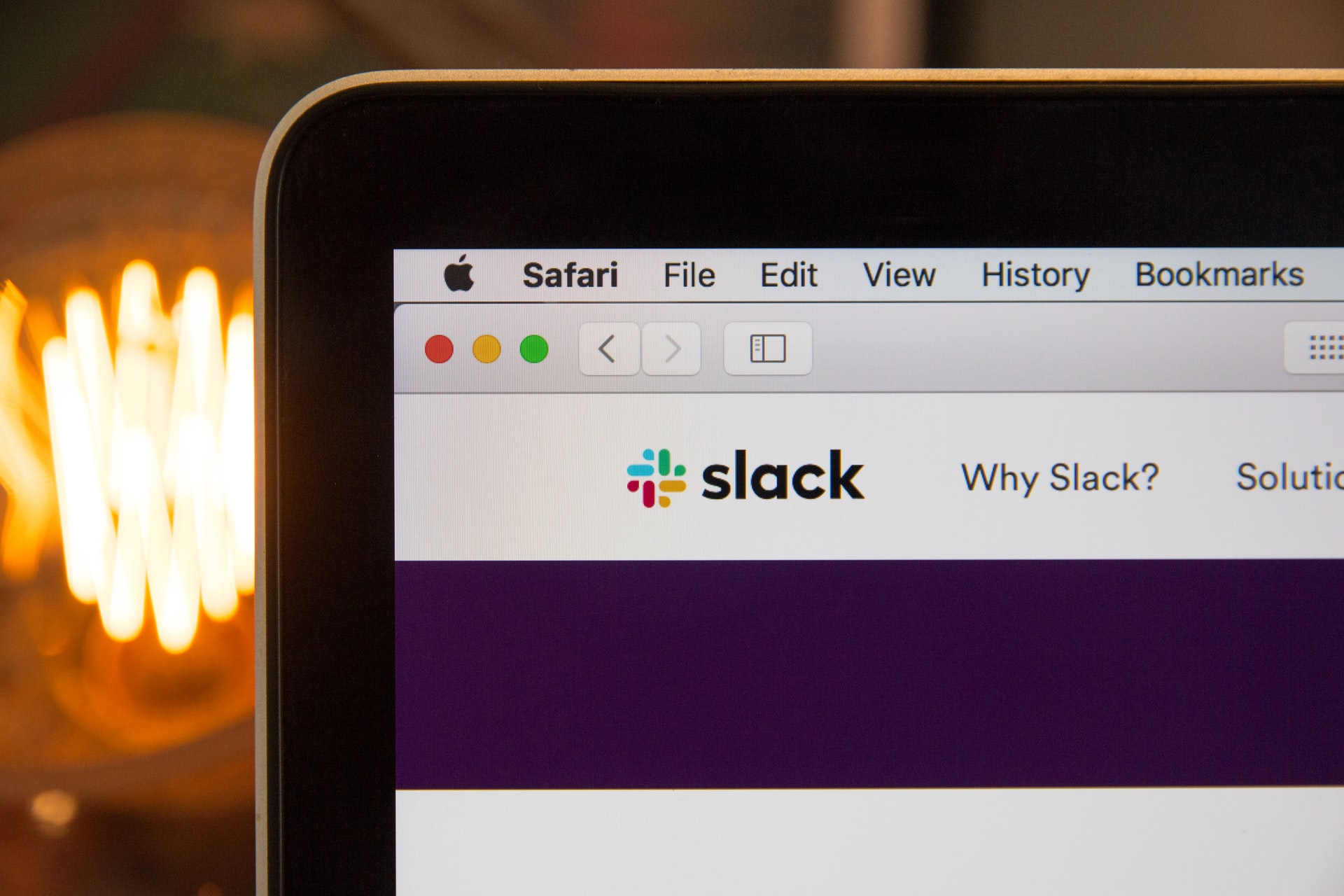Do you believe that digital teams can’t collaborate as well as office ones? Now that your team’s gone digital, are you worried that collaboration will take a hit?
Many leaders believe that collaboration is best done in the office, face-to-face. But, as we move deeper into the digital age and more teams become remote, these beliefs are being quickly turned on their head.
Collaboration is not just achievable in a digital setting, sometimes, it’s just better achieved than in a traditional workplace.
The key is in recognizing that the obstacles to collaboration are not the lack of a shared workspace or face-to-face interaction, but a work culture’s very attitude towards collaboration. Let’s break this down.
What is collaboration in the workplace?
Collaboration in the workplace means that team members within a workplace can work together effectively in order to complete a common goal.
Team collaboration became popular in companies in the last couple of decades – but it’s not just about seeming modern or agile. Collaboration has a lot of great benefits for companies.
According to a Harvard Business Review survey, collaboration leads to “a more engaged workforce, greater productivity, and a better customer experience”.
So, collaboration means that team members work better together and that leads to more productivity and a better product. In turn, a better product leads to happier customers and a more successful company.
Remote work isn’t an obstacle to workplace collaboration, despite common belief. Digital tools are often credited with streamlining processes and making collaboration easier and more effective – especially when they’re used right.
What is required for good workplace collaboration?
Here are some of the key ingredients needed for successful workplace collaboration:
- Effective leadership: workplace collaboration is better achieved in teams where leadership values collaboration, as well as team creativity and innovation.
- Vulnerability: collaboration works better when team members feel safe to be themselves, voice concerns and share new ideas.
- Team chemistry: team members who know and understand each other achieve better collaboration.
Now, let’s dispel some common misconceptions that you may have around workplace collaboration.
Myths we used to believe about workplace collaboration
Collaboration has to be in person
Good collaboration takes place in an office where all the team members are physically present – right? Wrong.
The problem with this idea is that it sits on the premise that effective communication between team members can only happen face to face.
Not only does collaboration not have to be in person, many of the collaborative tools that companies use in the office are the same tools that were created in response to the demand by remote work teams.
Collaborative tools make effective remote work possible! So instead of worrying that there might be a lull in collaboration if your team becomes digital, remember that the tools and platforms that your team will be using to get work done are the same tools that will foster good collaboration. And, you’ve probably been using these tools all along.
Workplace collaboration has to be synchronous
The idea that team members all have to work at the same time to achieve good collaboration and productivity is quickly becoming an outdated way of thinking about work – especially in digital teams.
With more teams becoming remote and working from different time zones in cities all around the world, expecting synchronous work is both unreasonable and unnecessary.
With the right digital platforms, team members can complete tasks on their own time and can alert others when the task is ready to be forwarded to the next member.
That being said, it is important for healthy teams to interact. Make sure you carve out time for meetings when all team members can attend and time when team members can have informal get-togethers where they don’t have to discuss work.
Co-located teams are more collaborative
Leaders think that if a team works out of a central location or ‘homebase’, the team will generally perform better. This is stemming from the old ‘butts in seats’ concept as a metric for employee productivity.
But let’s say that, for argument’s sake, teams do collaborate better when working out of a homebase. The question is, does the homebase have to be a physical space?
What if the homebase was a digital platform that all team members could engage with in a way that work becomes streamlined, and possibly, even more effective than working together in a workplace?
Besides – in the office, you can always appear to be busy. Remote employees, however, have to let their output speak for itself.
There are other advantages to having digital teams too. In addition to being able to maintain healthy collaboration among team members using digital tools, digital teams tend to be less involved in office gossip and politics than co-located teams.
Digital collaboration just means instant messaging the hell out of people
Employers, naturally, want their employees to get busy. Like in the office, digital leaders tend to look for easily spottable signs that employees are working. In a digital work space, this might be constantly messaging people on the company instant messaging platform (ex: Slack). Especially the group chat that the boss and managers are a part of too.
Objectively speaking, overtexting can be a massive waste of time. Firstly, how many times do you really need to remind your colleague that a particular task is ready for them to take over; and secondly, how much time does instant messaging take away from work that’ll actually move the project, team and company forward?
Digital leaders can rely on better metrics to measure productivity than constant emailing and messaging like:
- Meeting deadlines
- The time it takes the team to complete tasks
Projects usually have a lot of different moving parts. A team member can message a colleague about something and move on to another task while they wait for their colleague’s response. If a request is urgent, it can be flagged – and you can always make use of automatic reminders as well.
What are the obstacles to workplace collaboration?
Now that you’ve identified some of the myths around workplace collaboration you might wonder what the actual impediments to collaboration are.
The obstacles to effective workplace collaboration are mostly issues relating to work culture; i.e, how interested a company’s leadership is in collaboration and how empowered employees feel to be vulnerable and collaborate.
A survey from the Harvard Business Review showed the main obstacles to collaboration were:
- Lack of collaboration across larger departments (67%)
- Company culture of risk avoidance (35%)
- Lack of encouragement from leadership (32%)
Working arrangements (whether remote or otherwise) were not seen as an impediment to effective collaboration!
The main takeaway here is that digital tools facilitate good collaboration for all teams – including digital ones. What matters more than co-location or synchronous work is that you, as a digital leader, encourage your employees to express themselves and foster good collaboration.
Do you believe that digital teams can’t collaborate as well as office ones? Now that your team’s gone digital, are you worried that collaboration will take a hit?
Many leaders believe that collaboration is best done in the office, face-to-face. But, as we move deeper into the digital age and more teams become remote, these beliefs are being quickly turned on their head.
Collaboration is not just achievable in a digital setting, sometimes, it’s just better achieved than in a traditional workplace.
The key is in recognizing that the obstacles to collaboration are not the lack of a shared workspace or face-to-face interaction, but a work culture’s very attitude towards collaboration. Let’s break this down.
What is collaboration in the workplace?
Collaboration in the workplace means that team members within a workplace can work together effectively in order to complete a common goal.
Team collaboration became popular in companies in the last couple of decades – but it’s not just about seeming modern or agile. Collaboration has a lot of great benefits for companies.
According to a Harvard Business Review survey, collaboration leads to “a more engaged workforce, greater productivity, and a better customer experience”.
So, collaboration means that team members work better together and that leads to more productivity and a better product. In turn, a better product leads to happier customers and a more successful company.
Remote work isn’t an obstacle to workplace collaboration, despite common belief. Digital tools are often credited with streamlining processes and making collaboration easier and more effective – especially when they’re used right.
What is required for good workplace collaboration?
Here are some of the key ingredients needed for successful workplace collaboration:
- Effective leadership: workplace collaboration is better achieved in teams where leadership values collaboration, as well as team creativity and innovation.
- Vulnerability: collaboration works better when team members feel safe to be themselves, voice concerns and share new ideas.
- Team chemistry: team members who know and understand each other achieve better collaboration.
Now, let’s dispel some common misconceptions that you may have around workplace collaboration.
Myths we used to believe about workplace collaboration
Collaboration has to be in person
Good collaboration takes place in an office where all the team members are physically present – right? Wrong.
The problem with this idea is that it sits on the premise that effective communication between team members can only happen face to face.
Not only does collaboration not have to be in person, many of the collaborative tools that companies use in the office are the same tools that were created in response to the demand by remote work teams.
Collaborative tools make effective remote work possible! So instead of worrying that there might be a lull in collaboration if your team becomes digital, remember that the tools and platforms that your team will be using to get work done are the same tools that will foster good collaboration. And, you’ve probably been using these tools all along.
Workplace collaboration has to be synchronous
The idea that team members all have to work at the same time to achieve good collaboration and productivity is quickly becoming an outdated way of thinking about work – especially in digital teams.
With more teams becoming remote and working from different time zones in cities all around the world, expecting synchronous work is both unreasonable and unnecessary.
With the right digital platforms, team members can complete tasks on their own time and can alert others when the task is ready to be forwarded to the next member.
That being said, it is important for healthy teams to interact. Make sure you carve out time for meetings when all team members can attend and time when team members can have informal get-togethers where they don’t have to discuss work.
Co-located teams are more collaborative
Leaders think that if a team works out of a central location or ‘homebase’, the team will generally perform better. This is stemming from the old ‘butts in seats’ concept as a metric for employee productivity.
But let’s say that, for argument’s sake, teams do collaborate better when working out of a homebase. The question is, does the homebase have to be a physical space?
What if the homebase was a digital platform that all team members could engage with in a way that work becomes streamlined, and possibly, even more effective than working together in a workplace?
Besides – in the office, you can always appear to be busy. Remote employees, however, have to let their output speak for itself.
There are other advantages to having digital teams too. In addition to being able to maintain healthy collaboration among team members using digital tools, digital teams tend to be less involved in office gossip and politics than co-located teams.
Digital collaboration just means instant messaging the hell out of people
Employers, naturally, want their employees to get busy. Like in the office, digital leaders tend to look for easily spottable signs that employees are working. In a digital work space, this might be constantly messaging people on the company instant messaging platform (ex: Slack). Especially the group chat that the boss and managers are a part of too.
Objectively speaking, overtexting can be a massive waste of time. Firstly, how many times do you really need to remind your colleague that a particular task is ready for them to take over; and secondly, how much time does instant messaging take away from work that’ll actually move the project, team and company forward?
Digital leaders can rely on better metrics to measure productivity than constant emailing and messaging like:
- Meeting deadlines
- The time it takes the team to complete tasks
Projects usually have a lot of different moving parts. A team member can message a colleague about something and move on to another task while they wait for their colleague’s response. If a request is urgent, it can be flagged – and you can always make use of automatic reminders as well.
What are the obstacles to workplace collaboration?
Now that you’ve identified some of the myths around workplace collaboration you might wonder what the actual impediments to collaboration are.
The obstacles to effective workplace collaboration are mostly issues relating to work culture; i.e, how interested a company’s leadership is in collaboration and how empowered employees feel to be vulnerable and collaborate.
A survey from the Harvard Business Review showed the main obstacles to collaboration were:
- Lack of collaboration across larger departments (67%)
- Company culture of risk avoidance (35%)
- Lack of encouragement from leadership (32%)
Working arrangements (whether remote or otherwise) were not seen as an impediment to effective collaboration!
The main takeaway here is that digital tools facilitate good collaboration for all teams – including digital ones. What matters more than co-location or synchronous work is that you, as a digital leader, encourage your employees to express themselves and foster good collaboration.
)
)
)







